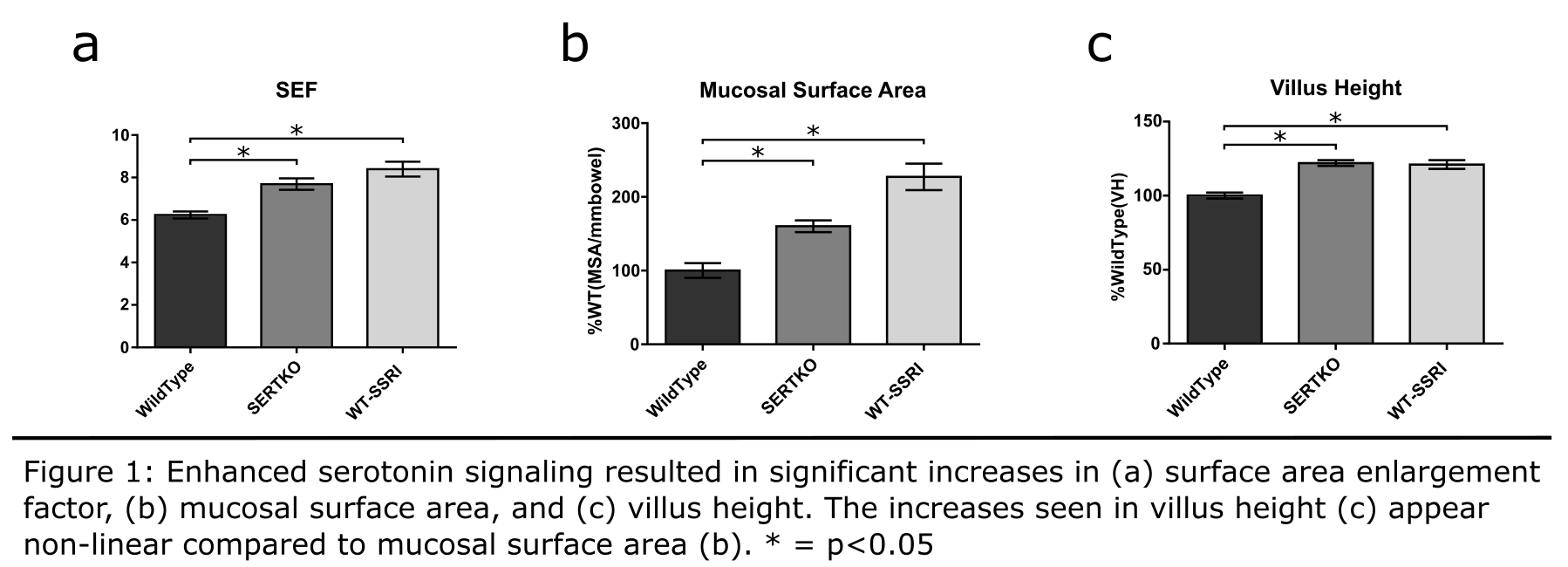Back to 2016 Annual Meeting Posters
Mathematical modeling of serotonin-induced increases in intestinal mucosal surface area
*Chasen J Greig, Robert A Cowles
Yale School of Medicine, New Haven, CT
Objective: Studies attempting to quantify intestinal mucosal growth typically report measurement of a single morphometric parameter, usually villus height, as a surrogate for the presumed changes in mucosal surface area. We hypothesized that using mathematical modeling based on multiple unique histologic measurements would provide accurate estimates of mucosal surface area that may differ from estimates based upon standard villus height measurement alone.
Design: Enhanced serotonin (5-HT) signaling stimulates mucosal growth in the murine small intestine. 5-HT signaling can be potentiated by targeting the serotonin reuptake transporter (SERT) responsible for 5-HT inactivation. Selective serotonin reuptake inhibitor (SSRI)-treated wild-type, SERT knockout (SERTKO) and wild-type (WT) C57Bl/6 mice were used for experiments. Distal ileal segments were obtained and paraffin sections H&E-stained. Villus height, villus width, crypt width and bowel diameter were used to calculate surface area enlargement factor (SEF) and mucosal surface area per millimeter of bowel (MSA).
Setting: Basic Science Laboratory
Participants: Mice
Interventions: Genetic knockout/pharmacologic inhibition of SERT
Main Outcome Measures: Surface area enlargement factor, mucosal surface area
Results: SEF and MSA were significantly increased for SERTKO and SSRI groups compared to WT. Villus height alone for SERTKO and SSRI was increased by 22% and 23% of WT, respectively, while increases in MSA via our mathematical model were 60% and 127% of WT, respectively (Figure 1).
Conclusions: Mathematical modeling provides a valuable tool for quantifying changes in intestinal mucosal surface area. This more comprehensive assessment of surface area does not appear to correlate linearly with single measurements of villus height alone.

Back to 2016 Annual Meeting Posters
